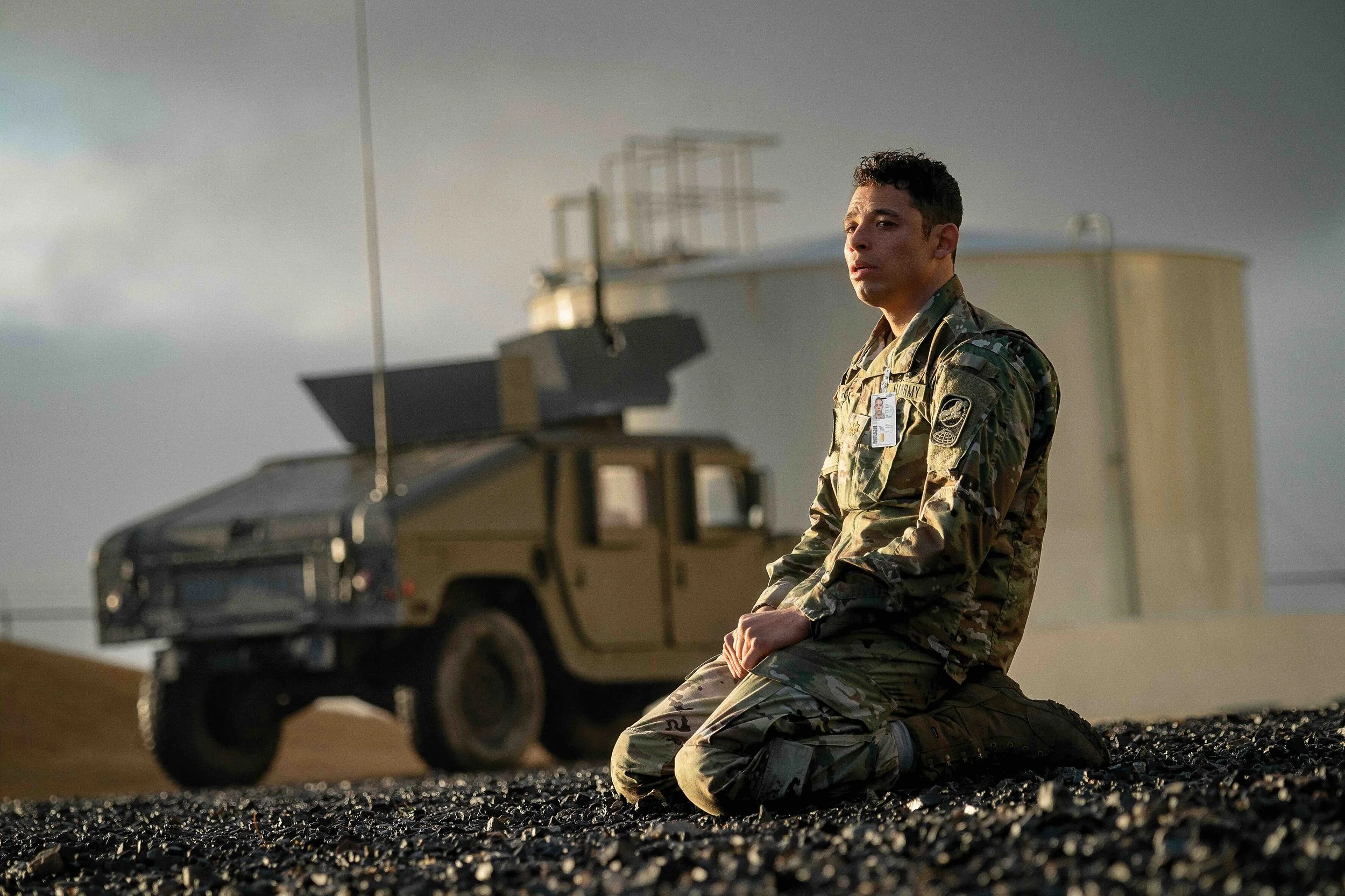“A House of Dynamite” Fizzles, Never Blows
This review was originally published on Film Obsessive.
Director Kathryn Bigelow is perhaps best known for being the first woman to win an Academy Award for Best Director. In 2008, her work on The Hurt Locker earned her the Best Director and Best Picture statues. In the years since, Bigelow has carved a niche for herself in the realm of political thrillers with films like Zero Dark Thirty and Detroit. Her latest, A House of Dynamite, is another entry in the genre, one that speaks to the ripples of the Cold War that can still be felt today. Stacked with a powerhouse cast, A House of Dynamite is thrumming with energy, but ultimately doesn’t have a place for it to go.
A House of Dynamite begins on a remote base in Alaska. The day is like any other, with coworkers sharing Doritos while their boss reprimands them for eating at their desks. Across the country in Washington, D.C., a mother is up early with her young son, who’s running a fever. The mother is Captain Olivia Walker (Rebecca Ferguson), who works in the White House as a communication point for military officials. Not long after the start of her shift, an airborne nuclear missile is picked up by U.S. radar. Officials don’t know where the missile originated, but they do know that time is limited. As the threat becomes imminent, more officials are brought into the story, including a Deputy National Security Advisor (Gabriel Basso), the Secretary of Defense (Jared Harris), and a FEMA official (Moses Ingram).
Photo by Eros Hoagland. © 2025 Netflix
Nearly all of A House of Dynamite takes place in the nineteen-minute hang time as the nuclear missile approaches its target. It’s in those nineteen minutes that the leaders of the United States must make a series of decisions that they’ve trained for, but never thought they would actually have to make. You may prepare for the end of the world, but you never think it’s coming. Sure, a guy follows the president around with a binder of nuclear retaliation scenarios, but the president never expects to have to pick one. A House of Dynamite is masterful in developing the tension of the film’s first chapter. There are nineteen minutes before the course of world history irrevocably changes, and we’re in the belly of the beast. We are seeing it play out as pixels on a screen. Then, as time is running out, we’re looped back to the beginning of the timer. This time, with a different group of government officials as they react to the threat. Again, as the clock winds down, we’re looped back one more time for the final perspective shift.
A House of Dynamite is not unique in its perspective-altering composition, but it doesn’t make the case for why the story needs to be told in this manner. Most generously, this style of narrative construction does allow for the film to capture what would likely be the real actions of a wide variety of different government officials, should a threat of this variety become real. The issue lies in the fact that each perspective shift is supposed to put the circumstances as we know them in a different light. There’s one moment in A House of Dynamite in the third chapter that manages to make audiences recalibrate something they thought they knew. Other than that, the film hits the same notes it already perfected in the first chapter. A House of Dynamite is meticulous in its research of the chain of events in an event like this, and it’s sort of dazzling to watch how information flits from person to person, base to base, and back again. However, we never move beyond that. It’s clear that Bigelow intends for this to be a conversation starter about nuclear proliferation, but the conversation this film is capable of having was outgrown decades ago. The opening even mentions that fear of nuclear war has existed since the 1980s, but A House of Dynamite has nothing new to offer in terms of a conversation. If we haven’t progressed to say something more than “a nuclear war would be really bad for everyone," then it’s hard to justify what A House of Dynamite is adding to our cultural conversations today.
Cr. Eros Hoagland/Netflix © 2025
A House of Dynamite never considers why an unknown entity has decided to bomb the United States. All the characters are in utter disbelief, as though they aren’t aware of how the U.S. has thrown money and weapons at global conflicts for their own personal gain, often to the detriment of another country. It’s not out of the question that a country grew fed up with the violent interference of America and decided to retaliate. By no means is this encouraging war as a way of solving global issues, but A House of Dynamite does lack introspection. At one point, a character refers to the vague idea of “bad guys” when encouraging the president to retaliate. Have we reached a point where we have to oversimplify geopolitical tensions to “bad guys?”
And then comes the conclusion. A House of Dynamite ends not with a bang, but with a whimper. It’s a confusingly abrupt ending for a film that has spent almost two hours circling the same beats without looking at the identity of the United States. It’s an uncritical view of the state of global affairs that doesn’t go much deeper than “no nukes.” Bigelow crafted a powder keg of modern anxieties, but forgot to light the fuse.
support your local film critic!
~
support your local film critic! ~
Beyond the Cinerama Dome is run by one perpetually tired film critic
and her anxious emotional support chihuahua named Frankie.
Your kind donation means Frankie doesn’t need to get a job…yet.
Follow me on BlueSky, Instagram, Letterboxd, YouTube, & Facebook. Check out Movies with My Dad, a new podcast recorded on the car ride home from the movies.


